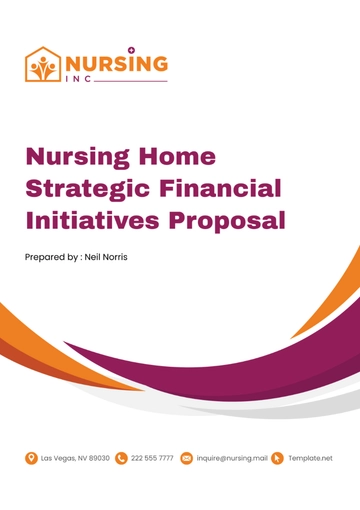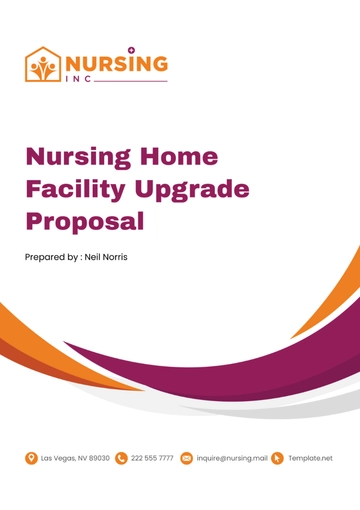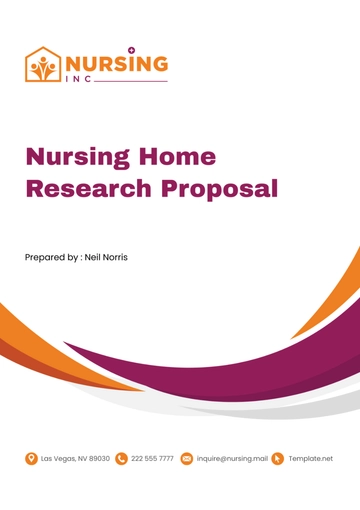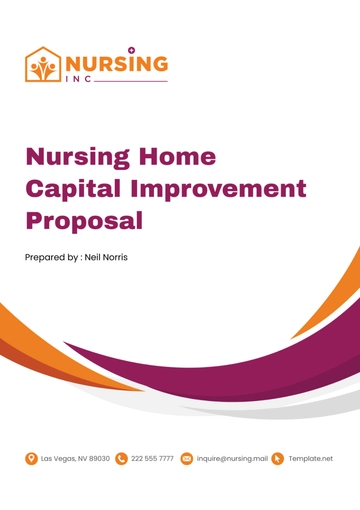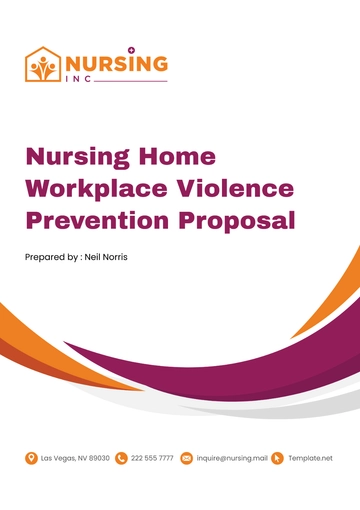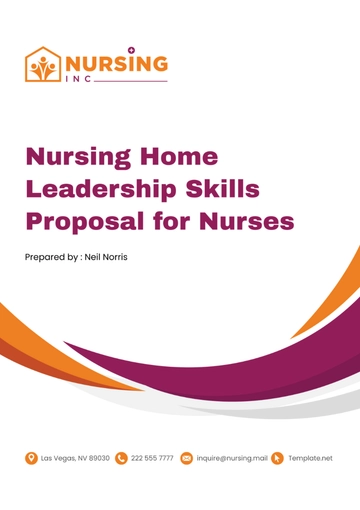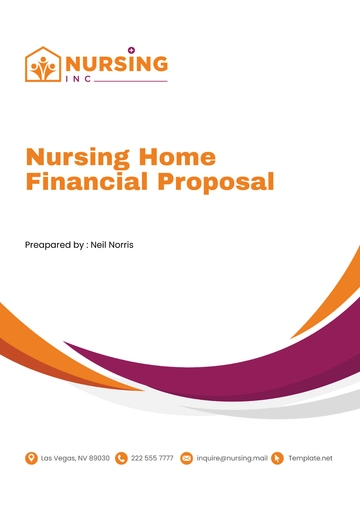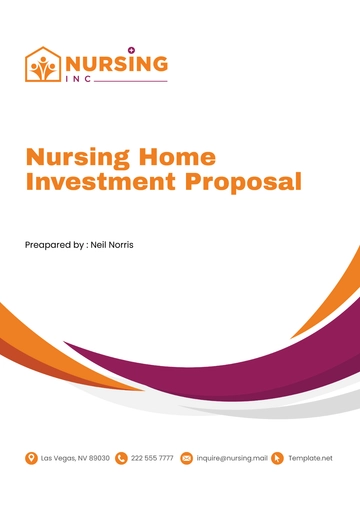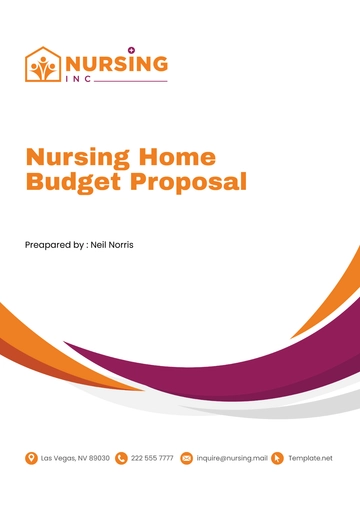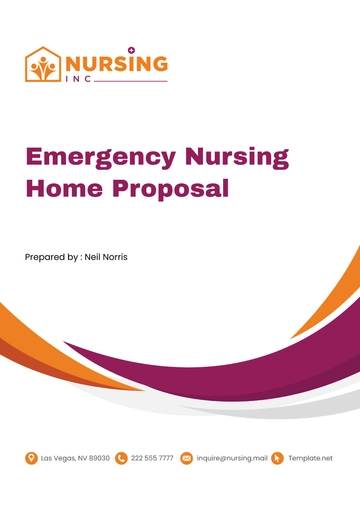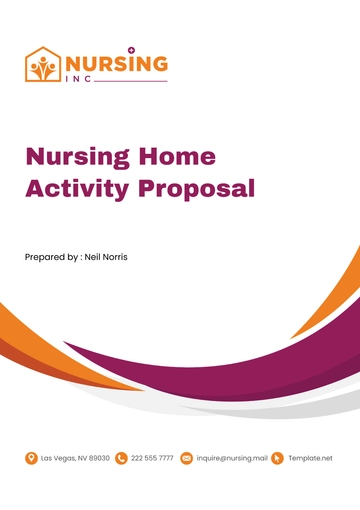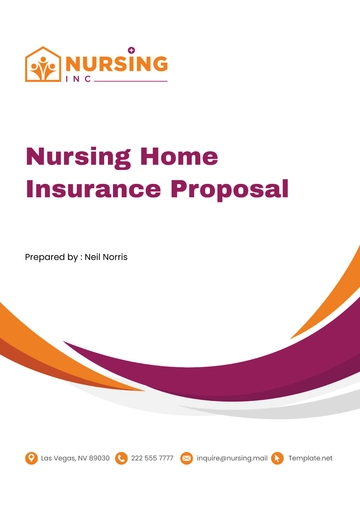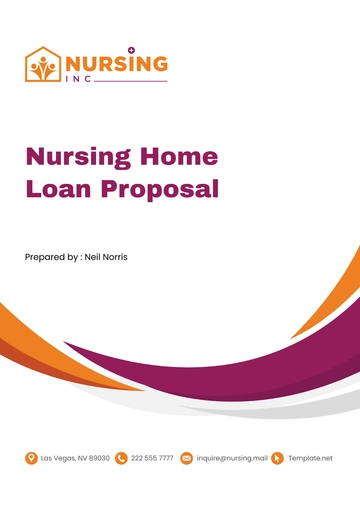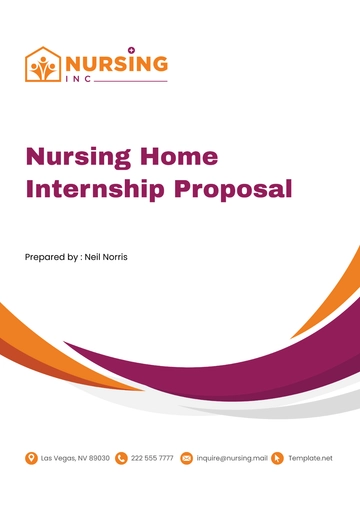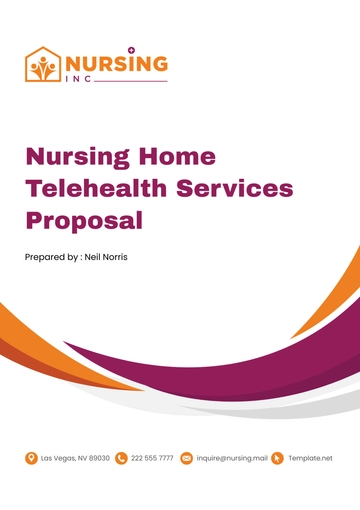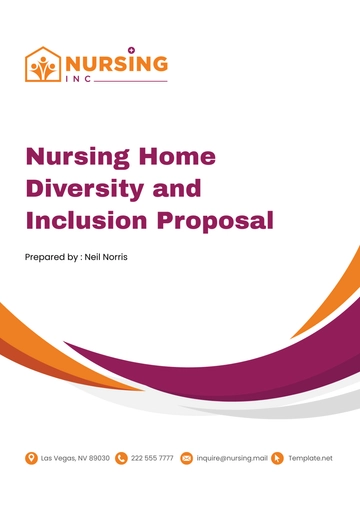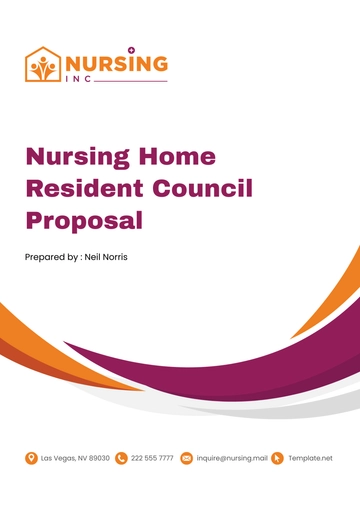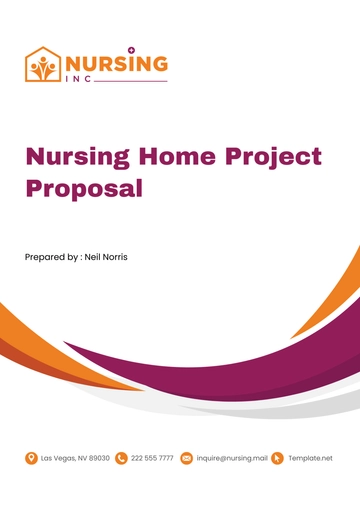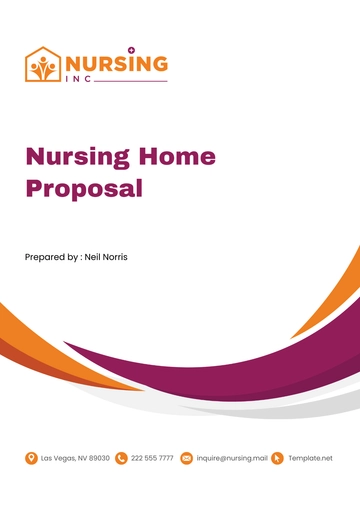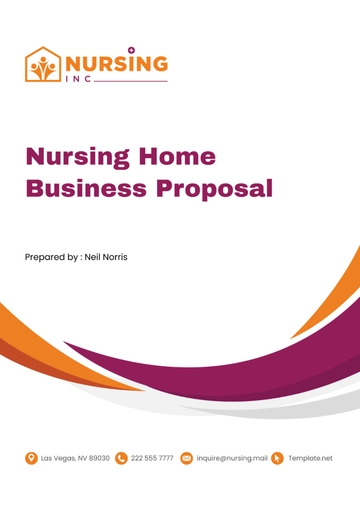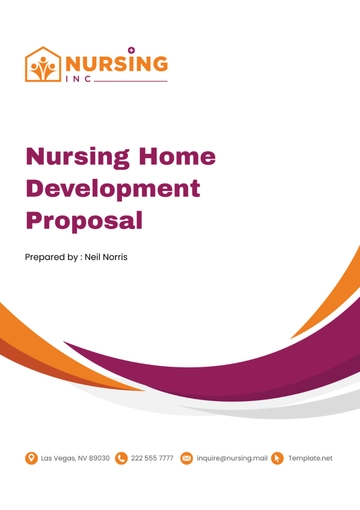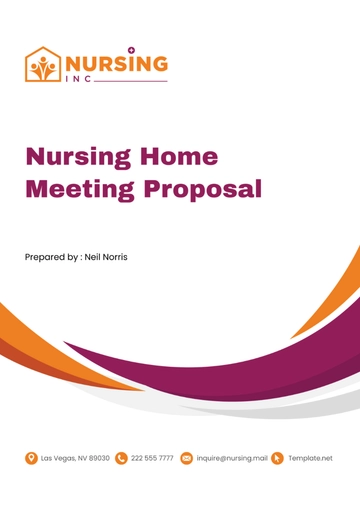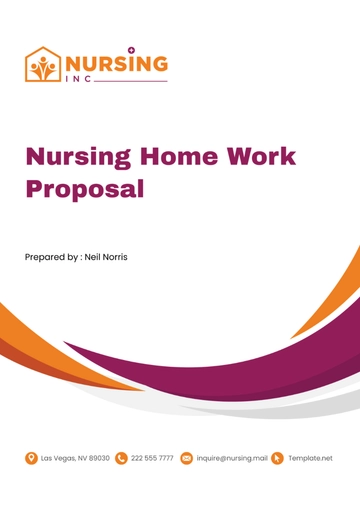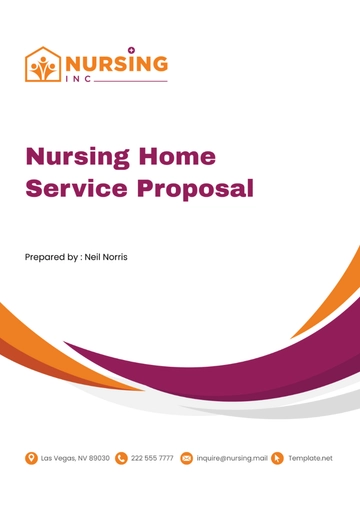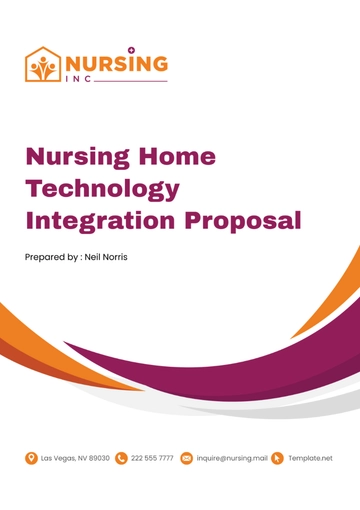Free Emergency Nursing Home Proposal
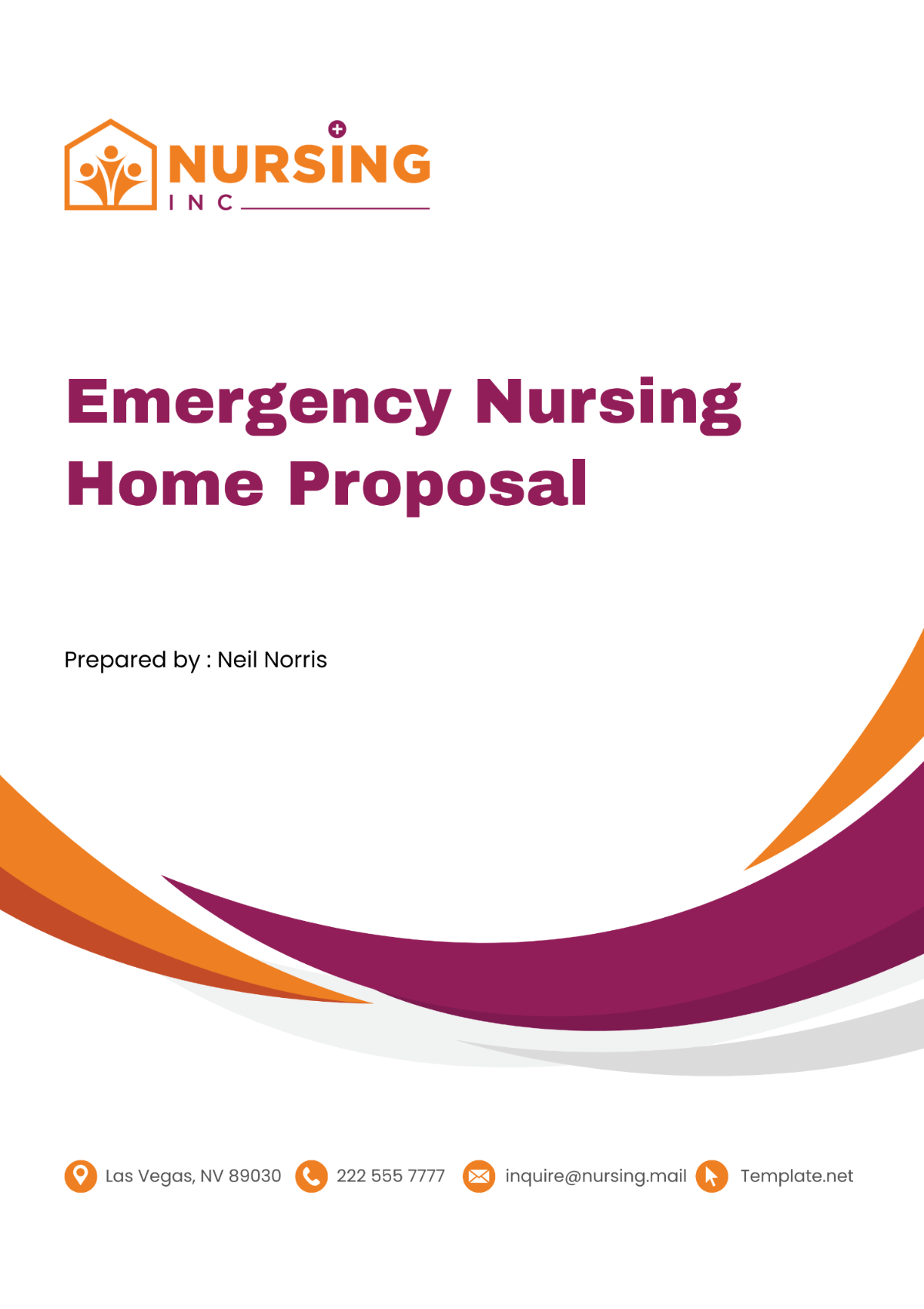
I. Executive Summary
[Your Company Name] recognizes the paramount importance of preparedness in the face of emergencies to safeguard the health, safety, and well-being of our residents, staff, and visitors. Our Emergency Nursing Home Proposal outlines a robust emergency plan designed to enhance our facility's readiness and response to a range of potential emergencies, including natural disasters, health pandemics, and utility failures. This proposal is crafted to meet and exceed local, state, and federal regulations, ensuring a comprehensive and compliant approach to emergency management.
II. Background
In the wake of recent global and local emergencies, the need for comprehensive emergency preparedness within nursing homes has never been more evident. [Your Company Name] is situated in a region prone to a variety of natural and man-made disasters, including but not limited to hurricanes, floods, wildfires, and health pandemics. The historical impact of such events on long-term care facilities has revealed critical vulnerabilities, particularly in the areas of evacuation, medical supply stability, and infection control.
A review of past incidents within our community highlights the consequences of inadequate preparation, from the tragic loss of life to the long-term psychological effects on survivors. These lessons drive home the importance of a proactive approach to emergency planning, with a focus on resilience, rapid response, and the continuous well-being of our residents.
III. Objectives
The primary objectives of our proposal include:
To establish a well-defined emergency management plan that addresses the unique needs of our nursing home residents, including those with special medical or mobility requirements.
To ensure all staff are adequately trained and equipped to execute emergency procedures effectively.
To achieve full compliance with all applicable local, state, and federal regulations concerning emergency preparedness in nursing facilities.
IV. Risk Assessment
A. Identification of Potential Hazards
Hazard Type | Specific Hazards Considered |
|---|---|
Natural Disasters | Hurricanes, Floods, Earthquakes |
Health Pandemics | Influenza, COVID-19, Norovirus |
Utility Failures | Power Outage, Water Supply Contamination |
B. Risk Analysis
When we identify each hazard, we analyze it based on the probability of its occurrence and the possible impact it can have. From this analysis, we construct a list of risks. This list is then prioritized to determine which risks need to be addressed first in our emergency preparedness plan.
C. Vulnerability Assessment
Our assessment takes into account the specific vulnerabilities of our nursing home population, including mobility issues, dependence on medical equipment, and susceptibility to health complications.
V. Emergency Preparedness Plan
Our Emergency Preparedness Plan is a comprehensive framework designed to address a wide range of potential emergencies. Key components include:
A. Evacuation Procedures
Pre-Designated Evacuation Zones: Based on the facility's layout and local geography, we have established specific zones for evacuation, minimizing confusion during an emergency.
Transportation Logistics: Arrangements with local transportation companies and emergency services ensure that vehicles are available for evacuation, including those equipped for residents with mobility challenges.
Special Equipment Handling: Procedures for the safe evacuation of residents dependent on life-sustaining equipment are a priority, ensuring no interruption in necessary medical support.
B. Shelter-In-Place Procedures
Secure Rooms: Identification of rooms best suited for shelter-in-place scenarios, equipped with necessary supplies, and reinforced against potential hazards.
Continuous Care: Assurance of ongoing medical care, medication administration, and basic needs fulfillment during the shelter-in-place period.
Mental Health Support: Access to psychological support for residents and staff, recognizing the emotional strain of such situations.
C. Lockdown Procedures
Access Control: Implementation of security measures to control access to the facility during a lockdown, ensuring the safety of all occupants.
Communication: Establishment of a clear line of communication with local law enforcement and emergency services for real-time updates and support.
Resident Welfare: Ensuring the continuous provision of care, comfort, and reassurance to residents during the uncertainty of lockdown conditions.
VI. Communication Plan
Effective communication is critical in emergencies. Our plan ensures that all stakeholders are informed, reassured, and engaged throughout the emergency:
Internal Communication Tools: Adoption of a unified communication system, such as a mobile alert app, for real-time updates to staff.
Family Communication Protocol: Establishment of a hotline and digital information portal for families to receive updates about their loved ones and the facility status.
Media Relations: Designation of a trained spokesperson to handle inquiries from the press, ensuring accurate and consistent information dissemination.
VII. Training and Drills
To ensure readiness, [Your Company Name] commits to:
Annual Comprehensive Training | Detailed sessions covering all aspects of the emergency plan, with a focus on role-specific responsibilities. |
Quarterly Drills | Simulated drills reflecting a variety of scenarios, from evacuations to shelter-in-place orders, including debriefing sessions to identify and rectify any issues. |
Continuous Education | Access to ongoing educational resources and updates on best practices in emergency preparedness. |
VIII. Supplies and Equipment
To ensure [Your Company Name] maintains a robust stockpile of essential supplies and equipment, ready for immediate deployment during an emergency.
A. Inventory Management
Implement a cloud-based inventory management system that enables real-time tracking of supply levels, expiration dates, and automated alerts for restocking or maintenance needs.
Supply List
Medical Supplies: Including but not limited to first aid kits, advanced life support equipment (e.g., defibrillators, oxygen tanks), personal protective equipment (PPE), prescription medications, and over-the-counter remedies for common ailments.
Food and Water: A minimum of a 7-day supply of non-perishable food items and bottled water, considering the special dietary needs of residents.
Power and Lighting: Portable generators, solar chargers, emergency lighting systems, and ample fuel reserves.
Communication Devices: Satellite phones, two-way radios, and extra cell phone batteries for maintaining communication lines when conventional systems fail.
Supplier Agreements: Develop standing contracts with key suppliers to prioritize the delivery of essential supplies during widespread emergencies.
Regular Audits and Drills: Incorporate supply and equipment checks into regular emergency drills, ensuring everything is functional, accessible, and adequate.
IX. Special Considerations for Residents
To tailor the emergency response plan to the individual needs of residents, ensuring everyone receives the care and assistance they require during an emergency.
A. Strategy
Individualized Emergency Care Plans: Collaborate with medical staff to create personalized care plans for each resident, detailing medical conditions, medications, mobility needs, and emergency contacts.
Special Needs Registry: Maintain a confidential registry of residents with special requirements, such as those needing assistance with evacuation, residents with dementia, or those dependent on dialysis or oxygen.
Training for Staff: Provide specific training on handling vulnerable populations during an emergency, including dementia care, mobility assistance techniques, and psychological first aid.
Family Communication Plan: Develop a protocol for informing and updating family members about their loved one's status and location during and after an emergency, using multiple communication channels for redundancy.
X. Partnership and Collaboration
To forge strategic partnerships with local authorities, healthcare facilities, and other relevant organizations, enhancing the effectiveness of [Your Company Name]'s emergency response.
A. Strategy
Local Emergency Services Partnership: Establish formal agreements with local emergency management agencies, fire departments, and police for coordinated response efforts. Include joint training sessions and shared drills.
Healthcare Facility Network: Create a network of local hospitals, clinics, and specialized care providers to facilitate the quick transfer or sharing of medical support and services when necessary.
Community Collaboration: Engage with community organizations, other nursing homes, and local businesses to develop a mutual aid network, sharing resources and information during widespread emergencies.
XI. Implementation Plan
To systematically deploy the Emergency Preparedness Plan, ensuring comprehensive coverage of all aspects and readiness of all stakeholders.
Phase | Details |
|---|---|
Phase 1 | Planning and Development: Over a period of 3-6 months, focus on developing the plan, involving all departments in creating procedures and checklists. Finalize supply lists and establish supplier contracts. |
Phase 2 | Training and Education: Implement a training program spanning 3 months, including hands-on training, tabletop exercises, and full-scale drills. Ensure all staff members are familiar with their roles and responsibilities. |
Phase 3 | Deployment and Testing: Roll out the plan over the next 3 months, conducting extensive drills and making adjustments based on feedback. Initiate regular supply checks and maintenance schedules. |
Budget Allocation: Provide detailed cost estimates for each phase, including training, supplies, equipment, and technology investments. Identify potential funding sources, including grants and budget reallocations.
XII. Monitoring, Evaluation, and Revision
To establish a continuous improvement process for the Emergency Preparedness Plan, ensuring it remains effective and responsive to evolving risks and needs.
Method | Details |
|---|---|
Annual Review and Evaluation | Conduct a comprehensive review of the plan each year, involving feedback from staff, residents, and external partners. Assess the performance of the plan during drills and actual emergencies. |
Continuous Feedback Loop | Implement a system for collecting feedback from all stakeholders, including a suggestion box and regular debrief meetings following drills and emergency events. |
Plan Revision | Update the plan based on feedback, lessons learned, and changes in the facility's environment, population, or regulations. Document revisions and communicate changes to all stakeholders. |
XIII. Conclusion
This Emergency Nursing Home Proposal for [Your Company Name] represents our unwavering commitment to the safety and well-being of our residents, staff, and community. By adopting a comprehensive, proactive approach to emergency preparedness, we aim to mitigate risks, enhance our response capabilities, and ensure a swift recovery from any disaster. This proposal and the plans outlined in this document are living testament requiring the engagement, dedication, and continuous effort of our entire team, alongside our partners and stakeholders, to maintain the highest standards of emergency preparedness.
- 100% Customizable, free editor
- Access 1 Million+ Templates, photo’s & graphics
- Download or share as a template
- Click and replace photos, graphics, text, backgrounds
- Resize, crop, AI write & more
- Access advanced editor
Respond with agility using Template.net's Emergency Nursing Home Proposal Template. Specially crafted for rapid development of emergency response plans, this template is fully customizable and editable via our Ai Editor Tool. Ensure your nursing home is prepared for any situation, safeguarding residents and staff. An indispensable tool for crisis management and preparedness, exclusively from Template.net.
You may also like
- Business Proposal
- Research Proposal
- Proposal Request
- Project Proposal
- Grant Proposal
- Photography Proposal
- Job Proposal
- Budget Proposal
- Marketing Proposal
- Branding Proposal
- Advertising Proposal
- Sales Proposal
- Startup Proposal
- Event Proposal
- Creative Proposal
- Restaurant Proposal
- Blank Proposal
- One Page Proposal
- Proposal Report
- IT Proposal
- Non Profit Proposal
- Training Proposal
- Construction Proposal
- School Proposal
- Cleaning Proposal
- Contract Proposal
- HR Proposal
- Travel Agency Proposal
- Small Business Proposal
- Investment Proposal
- Bid Proposal
- Retail Business Proposal
- Sponsorship Proposal
- Academic Proposal
- Partnership Proposal
- Work Proposal
- Agency Proposal
- University Proposal
- Accounting Proposal
- Real Estate Proposal
- Hotel Proposal
- Product Proposal
- Advertising Agency Proposal
- Development Proposal
- Loan Proposal
- Website Proposal
- Nursing Home Proposal
- Financial Proposal
- Salon Proposal
- Freelancer Proposal
- Funding Proposal
- Work from Home Proposal
- Company Proposal
- Consulting Proposal
- Educational Proposal
- Construction Bid Proposal
- Interior Design Proposal
- New Product Proposal
- Sports Proposal
- Corporate Proposal
- Food Proposal
- Property Proposal
- Maintenance Proposal
- Purchase Proposal
- Rental Proposal
- Recruitment Proposal
- Social Media Proposal
- Travel Proposal
- Trip Proposal
- Software Proposal
- Conference Proposal
- Graphic Design Proposal
- Law Firm Proposal
- Medical Proposal
- Music Proposal
- Pricing Proposal
- SEO Proposal
- Strategy Proposal
- Technical Proposal
- Coaching Proposal
- Ecommerce Proposal
- Fundraising Proposal
- Landscaping Proposal
- Charity Proposal
- Contractor Proposal
- Exhibition Proposal
- Art Proposal
- Mobile Proposal
- Equipment Proposal
- Student Proposal
- Engineering Proposal
- Business Proposal
